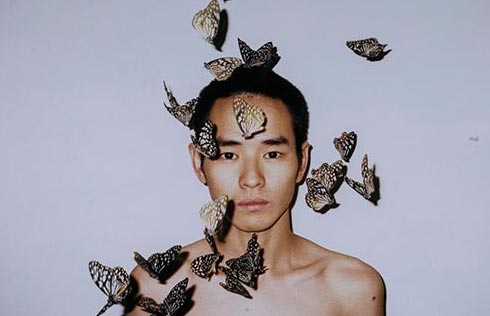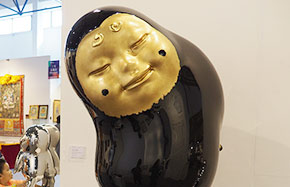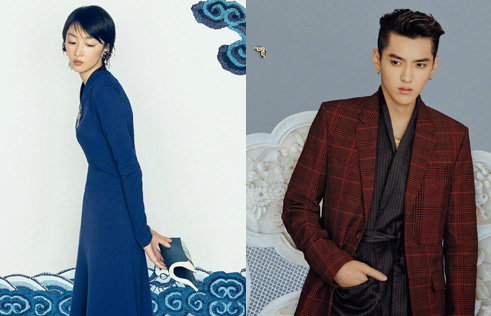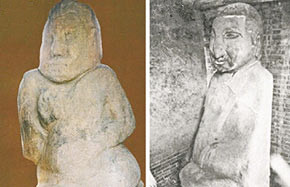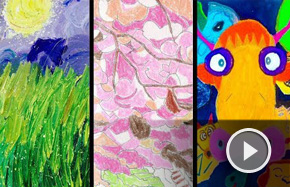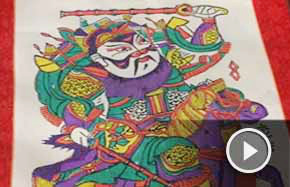Looking at himself from the outside leads artist to paint Chinese monks
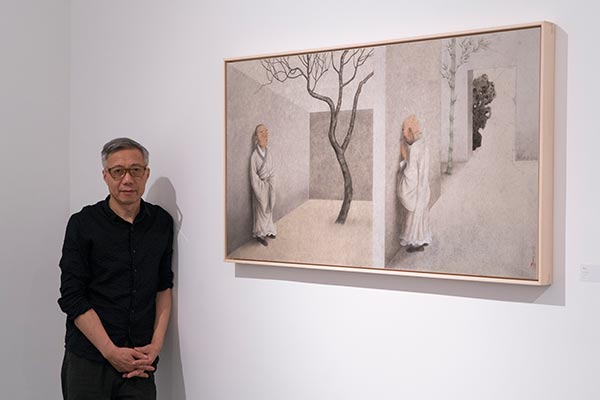 |
|
Yu Qiping is staging a solo show in Shanghai, featuring mostly portraits of monks. [Photo provided to China Daily] |
But eventually Yu decided to quit the job because he wanted to be an artist himself. When a Japanese company invited him to be a professional artist in 1991, he moved to Kobe, Japan.
However, the company went bankrupt, and he later went to work at a ceramic company, transcribing mostly Western classical artwork onto ceramic panels.
At the time, Yu visited lots of museums all over the world.
He recalls how close he stood to the Creation of Adam, the painting by Michelangelo in the Sistine Chapel, when the masterpiece was being restored.
It was during his visit to some of the ancient frescos featuring monks and abbots in Italy that inspired him to paint religious subjects.
"I began to paint Chinese monks-I enjoy painting people, and the monks have a distinctive quality that I want to capture," he says.
Believing he could be a better artist and recognized for his work at home, Yu moved back to China, settling down in Shanghai in 2008.
Wang Nanming, an art critic and curator, says: "Yu stands out in his group of new-generation literati artists."
Wang says Yu in his creativity has carried on with the traditional Chinese artistic pursuit for the beauty of the past and longing for what is gone forever.
Another art critic, Shi Jianbang, says he is impressed with Yu's ability to create a unique situation full of symbolism.
"He is particularly good at describing men of a certain type," Shi writes in an essay on Yu's paintings of monks, as well as his earlier series portraying men in zhongshan zhuang, a formal Chinese suit style for men.
These comrades and monks in their clothing are all symbols in Yu's paintings, guiding viewers through metaphors, Shi writes.
Yu declined to reveal the stories behind his paintings, but says the characters are based on his own reflections.
"Sometimes, I can't help but wonder what it would be like to observe myself from a different perspective. So I paint my characters in the same way but in different dimensions. One wants to see the other, but can't actually do so," he says.
"Artists are always a bit narcissistic, I guess."
If you go
Works by Yu Qiping
10 am-6 pm, daily through Sept 12. Anyi Gallery, 4, Lane 90, Tongren Road, Jing'an district, Shanghai. 021-6222-6527.
- Folk artists showcase skills, stunts during competition in Shandong
- Art Expo Beijing gathers different types of art
- 106 countries and regions join the 4th Silk Road International Art Festival
- Beyond tech: Int'l forum sheds light on future art, music and film
- Powerful traditions of stone sculpting live on




